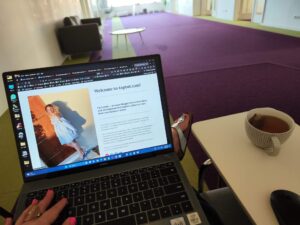This article is about understanding modern consumerism and breaking free from the endless loop of shopping sprees dictated by clever marketing. How can you start living the life YOU want and need with what YOU want and need?
People typically fail to comprehend how much consumer culture influences the decisions they make each day and their routine behaviors. The messages that appear through social media advertisements and retail store displays repeatedly assert that acquiring additional items will result in increased happiness. The marketing techniques exploit human emotions to generate false demands which traps numerous individuals in continuous product purchases they do not require.
The Hidden Costs of Overconsumption
The pursuit of increased purchases creates dual negative impacts for the individual and the environment. Research on consumer spending reveals the average American wastes $18,000 each year on unneeded items including abandoned gym memberships and unused clothing and forgotten subscriptions.
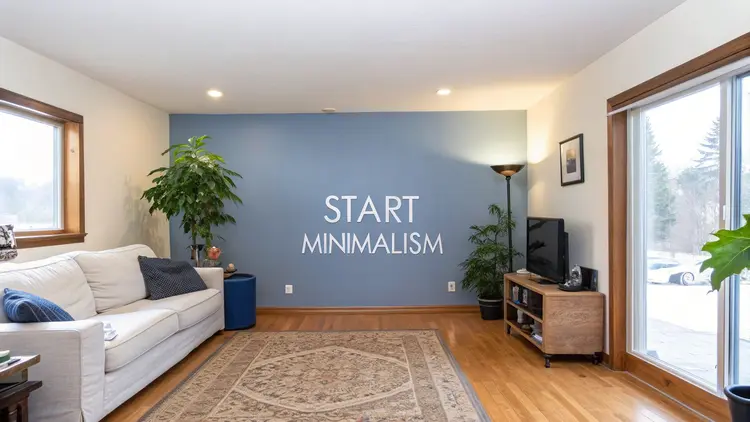
High-level consumerism leads to unnecessarily filling houses with items and creating environmental hazards. The increase in living expenses makes it essential for people to think carefully about what they buy.
People need to identify their purchasing triggers to break the spending cycle.
You must begin by understanding your individual spending triggers which are the emotional factors that cause you to make hasty purchases.
Three main factors that set off the urge to buy include experiencing stress or feeling unoccupied and also being influenced by advertising and peer pressure. Knowing when your triggers happen allows you to create new responses. Simply avoid shopping when you feel depressed because you can choose alternative activities such as walking or making phone calls with friends.
Developing a Healthy Approach to Consumption
Minimalism represents an approach that teaches people to value their existing possessions above ongoing acquisition of new ones.
The practice of mindful purchasing requires individuals to assess both their emotional needs and their financial responsibilities along with environmental consequences. Seek contentment through experiences and relationships by living according to your values instead of seeking temporary satisfaction through purchases of new things. Developing this new mental approach demands patience because it serves as the foundation for both cultural independence and meaningful lifestyle development.
The Modern Minimalist Movement: Finding Your Place
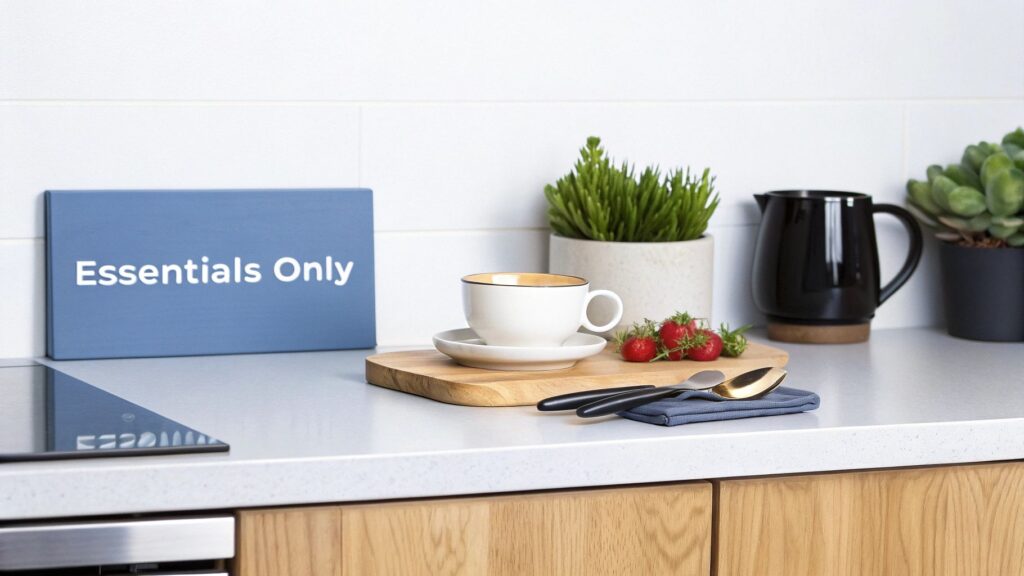
What does minimalism really mean in practice? It’s not just about empty rooms with stark white walls. At its heart, minimalism is a personal journey that looks different for everyone. You get to define what “less is more” means for your life.
If you’re curious about starting this journey, check out How to start with minimalism.
Beyond the Aesthetic: Diverse Approaches to Minimalism
The stage you are in life determines your approach to minimalism. Young families who have children should focus on organizing toys while establishing living areas that benefit everyone. Young professionals work on cleaning their digital presence while building effective work environments. Minimalism enables retirees to reduce their possessions and obtain more time to focus on essential life pursuits.
Generational Perspectives and Real Numbers
Each generation brings its own take on minimalism. Many millennials embrace it as a path to financial freedom and more meaningful experiences. Older folks often appreciate how it reduces daily stress and creates more peace at home.
Let’s look at some real numbers: A 2018 CivicScience study found some interesting patterns:
- Only 10% of U.S. adults call themselves minimalists
- 58% of women showed strong interest in minimalist principles
- 38% of minimalists are millennials
Finding Your Authentic Path
Beginning your minimalist path starts with this fundamental question:
“What do I hope to obtain through less possessions?”
Your desire to achieve certain goals like financial savings or stress reduction or time freedom drives your decision to begin a minimalist lifestyle. The answer you provide will help you develop minimalist principles that match your personal lifestyle. The first step of your minimalist journey requires you to eliminate items from your closet and reevaluate your shopping behavior and home entry decisions.
The minimalist approach has no standard solution that fits everyone because each person requires a unique path toward minimalism. Your own version of being minimalistic represents the best choice for your lifestyle.
Building Financial Freedom Through Intentional Living
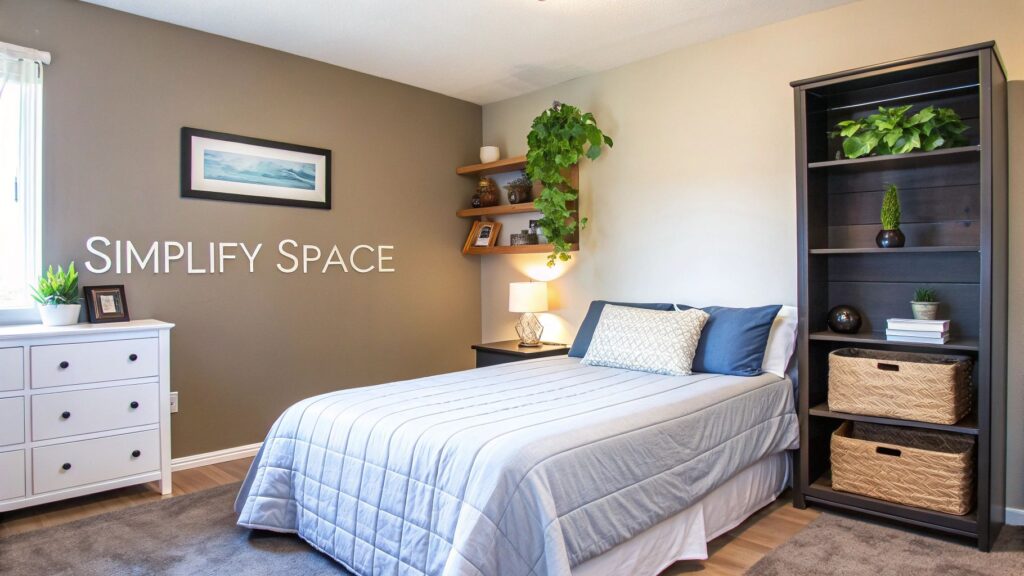
Minimalism extends beyond surface-level cleaning since it represents a functional method which helps organize your finances. Your selection of meaningful life values leads to decreased spending along with increased savings. The best part? The control you gain over your money will make you feel satisfied even though you might not feel deprived.
Aligning Spending with Values
Begin by examining the vital aspects that hold true importance to you. Love traveling? Consider putting your phone upgrade funds into travel expenses instead of buying the newest model. The essential thing for effective spending control is to align your purchases with your core values rather than outside societal expectations. A basic change in spending habits enables people to allocate their money toward things which bring them genuine happiness.
Creating a Sustainable Budget
Budgeting under a minimalist perspective creates an environment where people feel more in control instead of confined. Make note of how your money flows so you can identify automatic ways to reduce spending. The majority of individuals discover significant financial savings when they concentrate on necessary items rather than unnecessary items. Your objective should not be to reduce spending but to allocate money towards essential items better.
Resisting Consumer Pressure and Building Financial Security
Marketing messages in our daily life push people to acquire endless items they do not require.
Through minimalism you gain the opportunity to question whether you truly require the item before you buy it. Research indicates that minimalists who handle their money skillfully amount to 79% of the population thus demonstrating the effectiveness of this lifestyle.
The article provides information about how minimalism has become more popular in society. Your financial stress levels decrease directly proportional to the products you stop purchasing.
Setting Meaningful Financial Goals and Achieving Long-Term Freedom
Through adopting minimally keeping track of your money you can better concentrate on important financial targets including debt reduction or house savings or retirement funds creation. Transparent objectives will enable you to choose sound money decisions that propel your success. The best part? You will achieve all your financial targets while maintaining the comfort of basic life experiences.
Transform Your Space: Practical Decluttering Strategies
Getting started with minimalism begins with thoughtful decluttering. It goes beyond basic tiThising – it’s about making mintowhat truly deserves a place in your life. While decluttering can feel like a big task, breaking it down into clear steps makes it manageable and helps create a calmer living space.
Evaluating Your Possessions
Start by taking a close look at each item before deciding its fate. Ask yourself some key questions: Have I used this in the last 12 months? Does it add real value to my daily life? Do I feel happy when I look at it? If you answer no, it’s probably time to let it go. This helps build awareness of what you actually use and need.
The KonMari Method and Other Decluttering Techniques
Several proven methods can guide your decluttering journey. The KonMari Method by Marie Kondo focuses on keeping items that “spark joy,” making the process more meaningful. The Four-Box Method provides structure by having you sort items into: keep, donate, trash, and relocate. Both approaches help you make clear decisions about your belongings.
Creating Systems for Long-Term Organization
After decluttering, good systems help maintain your progress. Set up dedicated storage spots, schedule regular decluttering sessions, and try the “one in, one out” rule – when something new comes in, something old goes out. These habits prevent clutter from creeping back. Learn more in our article about How to master your bedroom space.
Addressing Emotional Attachments
IIt is natural to experience emotional responses when you decide to discard particular possessions. People commonly link personal memories and meaningful value to the things they own. The memories exist within your emotions rather than physical objects so acknowledge your emotions but understand that memories stay in your thoughts and heart.
Taking photographs of special possessions before their disposal helps you safeguard memories even though you choose to discard the items themselves.
Realistic Timelines and Maintaining Momentum
Home decluttering requires an extended amount of time to complete successfully.
The process becomes easier when you split your efforts between distinct areas such as individual rooms or specific drawers or categories. The establishment of practical objectives enables you to maintain your drive without experiencing excessive pressure.
Following this method enables you to move forward while managing your regular responsibilities.
Digital Decluttering and Paperwork Management
Digital spaces need attention during the decluttering process. An unorganized inbox coupled with chaotic computer file organization creates similar levels of stress to physical disarray. You should maintain digital file organization by cleaning up files alongside removing unwanted email subscriptions and establishing proper online space organization. You should scan essential documents then destroy unwanted papers to maintain an organized home workplace.
Learn more about How to master digital decluttering. With these strategies, you can create a more intentional, organized lifestyle.
Developing the Minimalist Mindset for Lasting Change
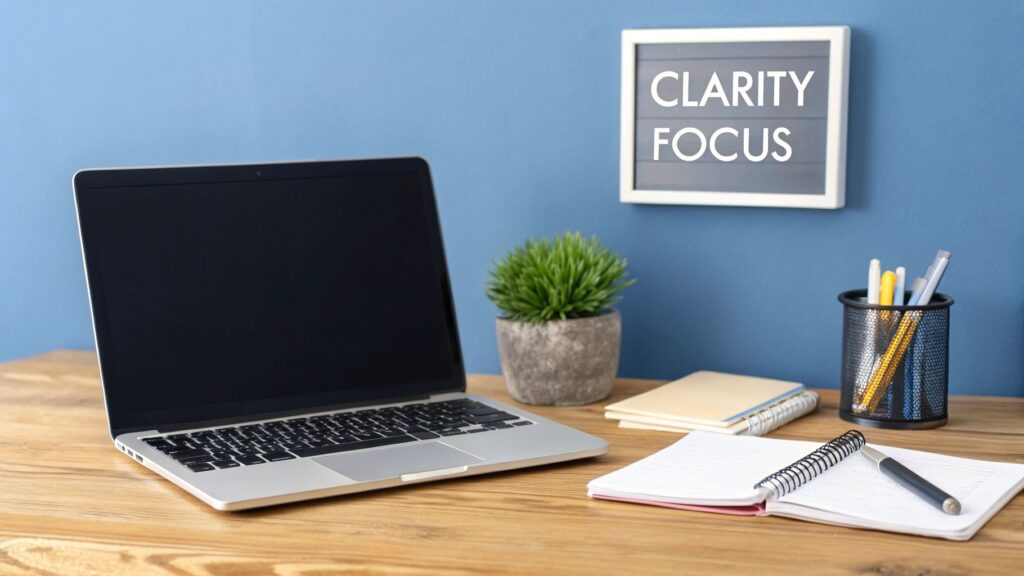
Making minimalism a permanent part of your life goes beyond cleaning out your closets. It’s about fundamentally changing how you think about your stuff and finding joy in having less. The real key is learning to value experiences and relationships over material things.
Rethinking Your Shopping Habits
Take an honest look at why you buy things. Are you filling a real need, or trying to feel better after a bad day?
Maybe those barely-worn clothes in your closet were bought to boost your confidence or keep up with trends. Understanding these patterns is the first step to breaking free from mindless buying.
Learning to Love What You Have
Real satisfaction comes from appreciating your current possessions instead of always wanting more. Try focusing on making memories with loved ones, growing as a person, and giving back to others. When you’re grateful for what you already own, you naturally stop craving more stuff.
Getting Past the Emotional Hurdles
Letting go of belongings can stir up strong feelings. Many items hold special memories, making them tough to part with even if they’re just collecting dust.
One helpful tip: Take photos of sentimental items before donating them. This lets you keep the memory while clearing physical space. Focus on how much lighter and clearer you’ll feel with less clutter.
Handling Gifts and Family
Minimalism may generate conflicts between family members when it comes to celebrating birthdays and holidays.
Share your minimal lifestyle decision with your family members. They should consider giving memorable experiences instead of material possessions such as concert tickets or a shared day trip. The idea of creating a donation instead of receiving material presents should be suggested to loved ones through your personal advocacy.
Staying Minimal Through Life’s Changes
The natural flow of life leads to frequent shifts between new jobs, relationships, living arrangements and family expansion. Changes in your life will put your minimalist lifestyle to the test. Regular checks on your possessions determine their ongoing relevance to your present situation.
Having children can require new acquisitions but you should make intentional choices about home items selection.
Regularly check which possessions benefit you as your situation transforms through life.
Sustaining Your Minimalist Journey: Long-Term Success Strategies
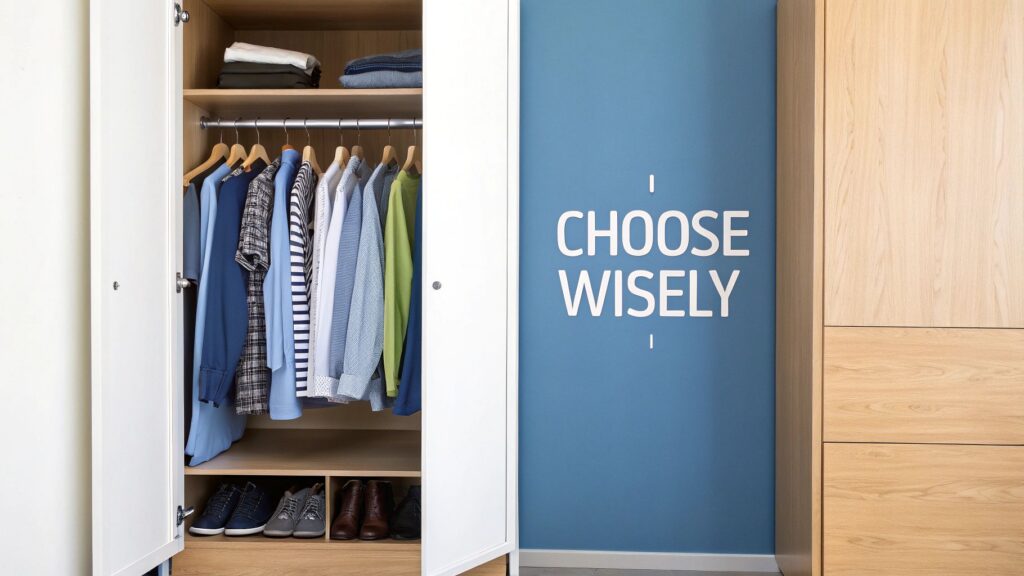
Living with less isn’t just about decluttering once – it’s an ongoing practice that grows with you. Like building any good habit, maintaining a minimalist lifestyle takes conscious effort as your life evolves. Let’s explore practical ways to keep your minimalist journey going strong. Want to dive deeper? Check out: 12 Universal Benefits of Minimalism.
Adapting Minimalism to Life Changes
Any major life transition automatically affects our approach to simplified living.
Starting a family together with career changes and moving to a new place leads to different challenges. The arrival of a new baby gives you an excellent opportunity to choose items that will help your family grow in the best way. When you transition between different work environments, your workspace requirements will evolve, yet you can maintain simplicity. Your flexibility should allow you to maintain your minimalist principles.
Preventing Backsliding: Strategies for Staying on Track
Returning to previous buying habits once in a while is considered typical behavior. Establish checkpoints to monitor your belongings since they help you prevent backsliding.
Choose either a monthly or quarterly or yearly schedule that lets you confirm everything you own aligns with your current life values. Beware of shopping triggers that come from social media advertisements or major sales promotions. Your knowledge of what causes you to spend money helps you maintain your minimalist path.
Handling Unexpected Life Events
The unexpected events of life including job transitions and sudden relocation and unexpected shocks to our daily patterns. The unexpected situations push us to make speedy choices regarding our belongings. The development of solid minimalist practices facilitates the identification of better choices.
During difficult times understanding what belongs to needs and wants category becomes doubly essential. A minimalist perspective functions as an anchor which maintains your stability throughout challenging life events.
Evolving Your Practice: Staying True to Your Values
Minimalism exists without strict adherence to rules.
Your personal path of minimalism should progress alongside your personal development. Your exploration may lead you to redefine your approach to decluttering while redefining your worth and digital lifestyle. Your practice needs to remain true to your core values so you should verify that it upholds your essential priorities. Regular reflection helps you maintain minimalism as a beneficial life force.
Practical tools await you for life and work simplification.
The combination of journaling and mind mapping and WordPress will show you how to eliminate mental distractions while reaching your objectives.
Conclusion
Minimalism has been a game-changer in my life. It didn’t just clear my physical space—it sharpened my focus, freed up my time, and, most importantly, transformed my finances. Cutting out the clutter meant cutting out unnecessary expenses, and that shift led to financial success I never thought possible. But beyond the numbers, minimalism also improved the energy flow in my home, making it a place of clarity and calm rather than chaos.
This isn’t just about getting rid of stuff—it’s about making room for what truly matters. Less noise, more meaning. Less impulse, more intention. And in the end, that’s what real freedom looks like.

Lorelei has been an online entrepreneur, marketer and writer since 2006. Her biggest passion is WordPress, which is why she switched to being a full-time blogger 20 years ago and hasn’t looked back since. With so many years of experience behind her, she is an expert in copywriting, SEO, marketing and business strategies.


